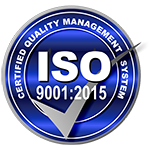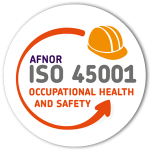Top 10 Safety Measures Questions to Consider in Drilling Projects
Safety is paramount in any drilling operation. When hiring a drilling company, it’s essential to inquire about their safety procedures, emergency response plans, and adherence to industry safety standards.
1. Have We Conducted a Thorough Risk Assessment?
Every drilling project has unique risks based on location, depth, and geological conditions. A risk assessment identifies potential hazards—like blowouts, equipment failure, or gas leaks—and helps develop mitigation strategies.
✅ Tip: Use HAZOP (Hazard and Operability) studies and Failure Mode Effects Analysis (FMEA) to evaluate risks in depth.
2. Is the Drilling Crew Properly Trained and Certified?
Human error is one of the leading causes of accidents. Ensuring that every team member is trained in both standard operations and emergency procedures is essential.
✅ Tip: Implement ongoing safety training and certifications like IWCF (International Well Control Forum) or IADC WellSharp.
3. Are We Using the Right Personal Protective Equipment (PPE)?
From hard hats to flame-resistant clothing, proper PPE can be life-saving. The type and quality of equipment should align with site-specific risks.
✅ Tip: Conduct regular PPE audits and ensure compliance with OSHA and API guidelines.
4. Are Safety Protocols and Emergency Procedures Clearly Communicated?
A comprehensive safety manual and visible signage are crucial—but so is team awareness. Everyone on site should know what to do during an emergency.
✅ Tip: Run monthly emergency drills for scenarios like blowouts, fires, or H2S gas exposure.
5. Is Equipment Regularly Inspected and Maintained?
Worn-out or faulty equipment significantly increases the risk of accidents. Maintenance should be preventive, not reactive.
✅ Tip: Maintain a digital maintenance log and enforce daily equipment inspections before shifts.
6. Do We Have a Blowout Prevention System (BOP) in Place and Tested?
A blowout can be catastrophic. A functioning and tested Blowout Preventer is non-negotiable for any drilling operation.
✅ Tip: Test BOPs regularly and ensure all operators know how to activate them quickly.
7. Have We Evaluated Environmental and Surrounding Area Risks?
Drilling projects can disrupt ecosystems and local communities. Understanding external risks is crucial for safe operations.
✅ Tip: Conduct Environmental Impact Assessments (EIA) and develop contingency plans for spills or contamination.
8. Are Safety Data Sheets (SDS) Accessible for All Hazardous Materials?
Chemicals and lubricants used in drilling can be harmful if mismanaged. SDS sheets ensure proper handling and emergency response.
✅ Tip: Digitize and centralize SDS access for quick retrieval on site.
9. Is There a Clear Chain of Command and Communication?
Unclear communication can delay emergency response and worsen incidents. Everyone should know their roles and who to report to.
✅ Tip: Use communication tools (like two-way radios) and maintain an updated site org chart.
10. Are We Monitoring for Toxic Gases Like H2S?
Toxic gas leaks, especially Hydrogen Sulfide (H2S), are silent killers. Continuous air quality monitoring is vital.
✅ Tip: Install fixed and portable gas detectors and ensure all staff are trained in gas detection response.
Final Thoughts
Safety in drilling projects is non-negotiable. By asking the right questions, project managers and safety officers can identify weak points before they lead to incidents. Implementing robust safety measures isn’t just best practice—it’s a regulatory and moral responsibility.



